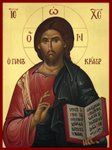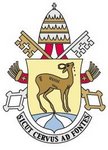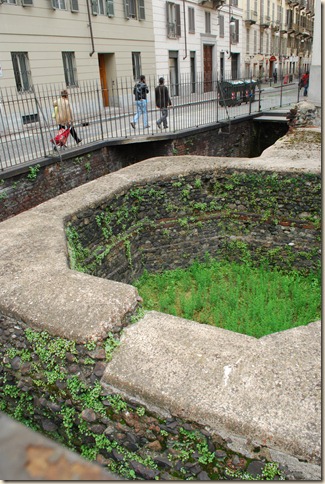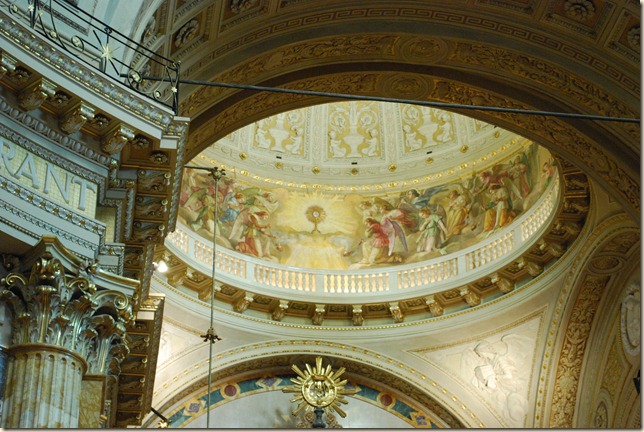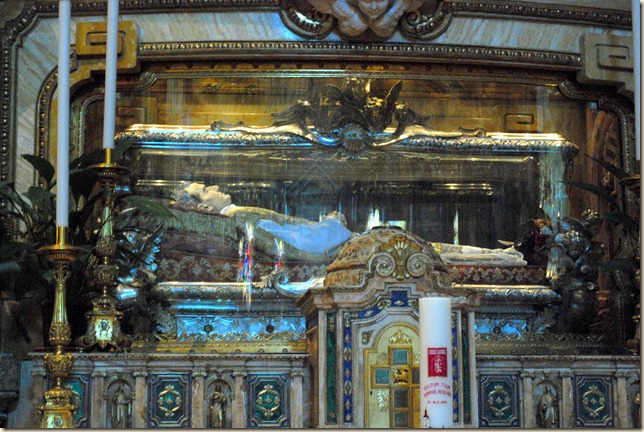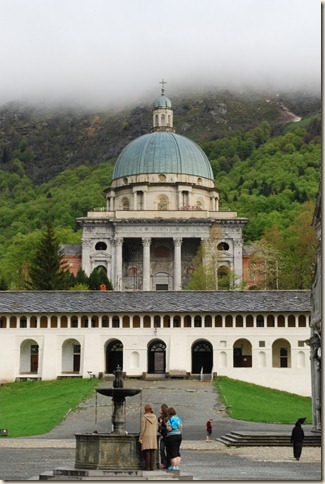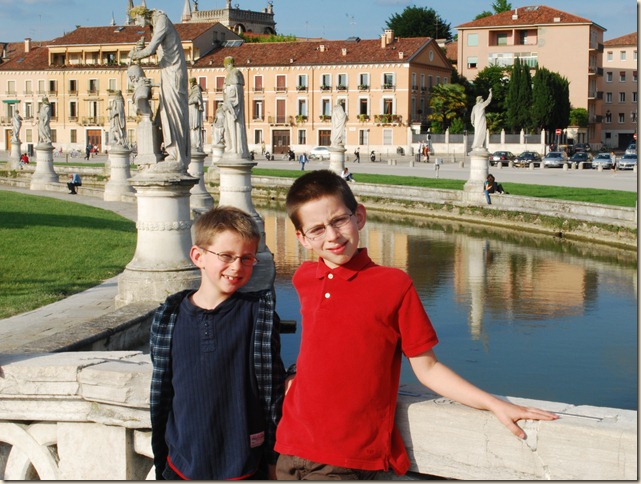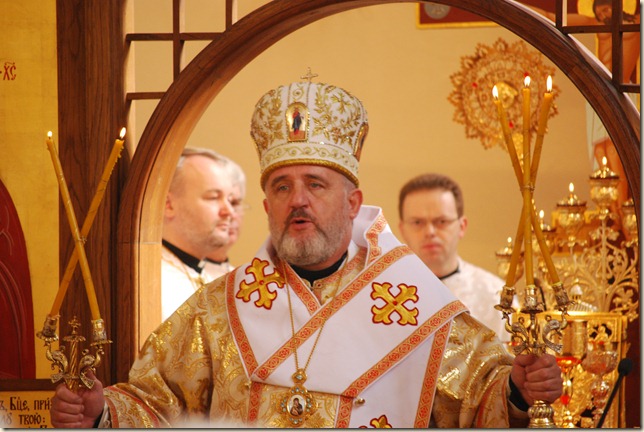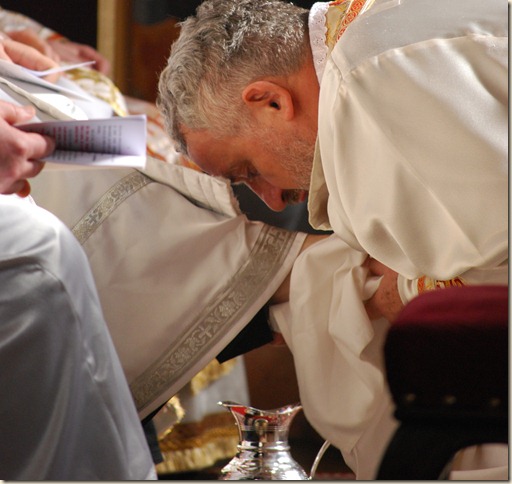Thursday, May 20, 2010
I Forgot to Mention...
Wednesday, May 19, 2010
Pilgrimage to the Holy Shroud
God blessed us with an opportunity of a lifetime last week. The ITI planned a pilgrimage to visit the Holy Shroud of Turin. We were able to work for the ITI as a way of defraying most of the cost of the trip. Debbie, 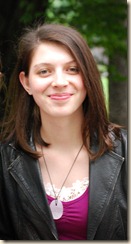 Felicity, and Cody spent an entire Saturday cleaning out the attic of the castle that the ITI resides in. I am guessing that it has been several decades, at least, since it was last cleaned. It was nasty work.
Felicity, and Cody spent an entire Saturday cleaning out the attic of the castle that the ITI resides in. I am guessing that it has been several decades, at least, since it was last cleaned. It was nasty work.
We left Trumau Wednesday night (May 12 – the vigil of the Ascension) at 5:30 pm. The bus traveled all night. We stopped at a rest stop at 6am so we could brush our teeth and change clothes before we got to Turin. We got to Turin at 7am or so. They estimate there will be two million people see the Shroud in the two months it is displayed. The Shroud has been displayed to the public only five times (that includes this time) in the last 120 years! What a blessing that we were able to stand before the burial shroud of our Lord.
We wound our way through the Cathedral’s complex to get to the Shroud. About the last twenty minutes of the wait was in complete in silence. It was such a blessing to have the time to prepare ourselves for what we were about to see. We were allowed about five minutes in front of the Shroud. I can’t put words to what I experienced. The strongest was the presence of God. I was so grateful and humbled. After our time was up, we could go enter into the back of the cathedral to pray more before the Shroud. I could have stayed there a very long time. (We were not allowed to take pictures so I don’t have any of inside the church.)
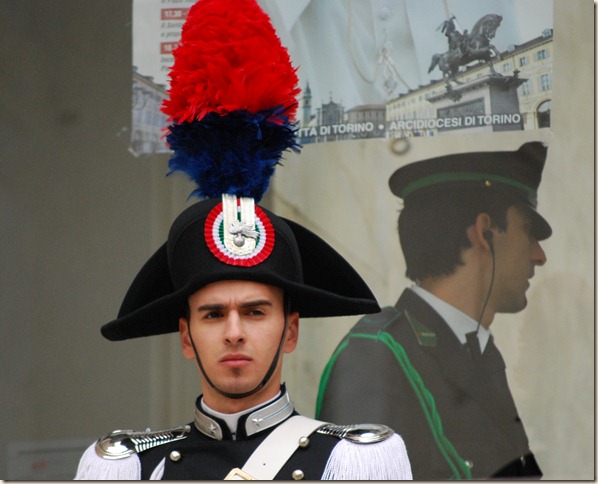 Guard at the Cathedral at Turin
Guard at the Cathedral at Turin
The Lee crew in front of the Cathedral. Zeke was asleep. Cody was ill and stayed home.
Zach and an Italian soldier.
It was a special privilege to see the Shroud on the Feast of the Ascension. There is evidence that the Shroud was used as an altar cloth. Some believe that the origin of the corporal (the piece of cloth placed on the altar where the gifts are placed) in the Latin Church and the antimension in the Eastern Church (and the epitaphion) came from the use of the Shroud as an altar cloth.
After we left the Church, we walked to another church for Mass. This church contained the relics of St. Don Bosco, St. Dominic Savio, and St. Maria Domenica Mazzarello. The walk was beautiful.


Inside the dome over the main altar at St. Francis’.
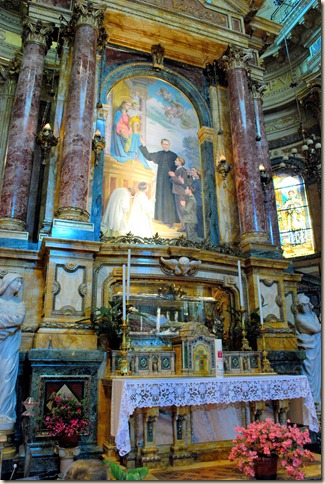 Altar with relics of St. John Bosco.
Altar with relics of St. John Bosco.
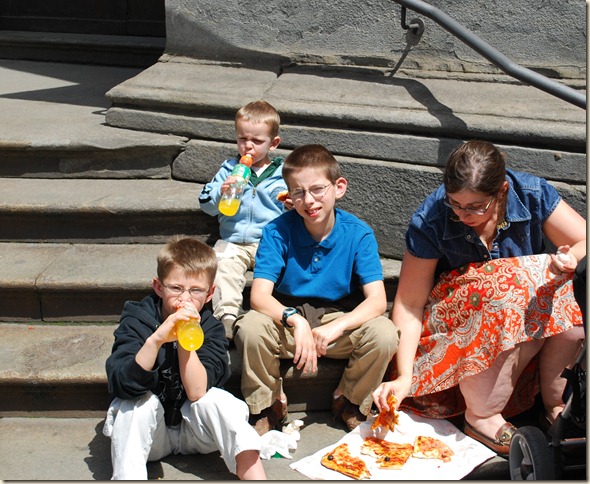 Eating pizza on the steps of a church. It was really good, too. Not as good as the gelato that we had next!
Eating pizza on the steps of a church. It was really good, too. Not as good as the gelato that we had next!
We left Turin and drove up into the Italian mountains to the place where we would spend Thursday night. We were all excited to actually sleep in a bed and not in a bus seat. No one had been to the place we were staying. We were in for a wonderful surprise. We stayed at the pilgrimage site of Our Lady of Oropa. It is one of the oldest in Italy. It is a huge basilica nestled in the mountains. We were only a few hundred feet elevation from snow. It was gorgeous. The pictures just won’t do it justice.

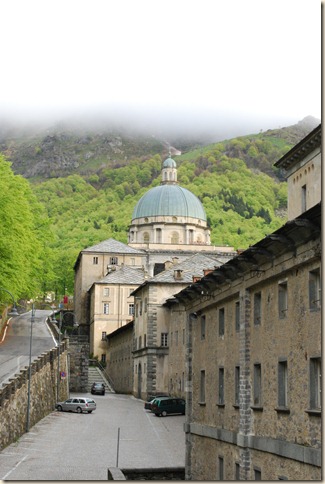 The basilica from our room window.
The basilica from our room window.
The basilica from the middle courtyard.
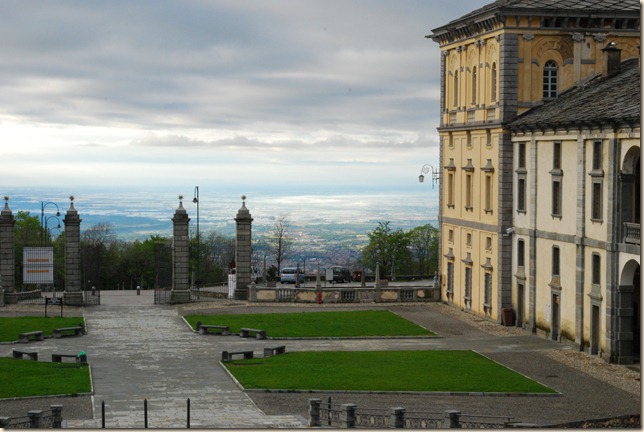 View from the courtyard into the valley below.
View from the courtyard into the valley below.
Our Lady of Oropa.
We left Oropa first thing in the morning on Friday so we would have a little time in the city of Padua. What an amazing day. We saw St. Luke (the one who wrote the Gospel and Acts of the Apostles), St. Matthias (the one who replaced Judas Iscariot Acts 1:15-26), St. Anthony of Padua (his tomb and his incorrupt tongue, voice box, and lower jaw), and letters written by St. Maximillian Kolbe, St. Alphonsus Ligouri, and St. Vincent de Paul. I do not have any pictures from within St. Anthony’s basilica. They weren’t allowed. I will post a few of the others.
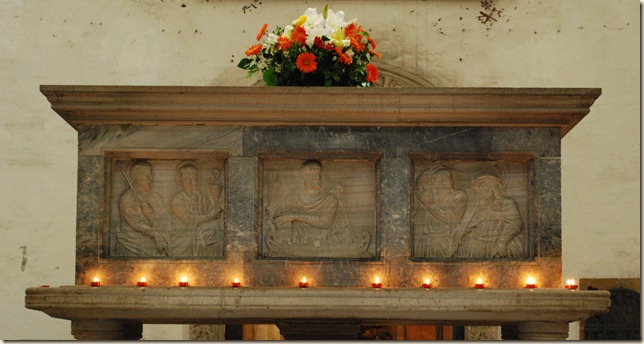 Tomb and relics of St. Matthias. We were there on his feast day.
Tomb and relics of St. Matthias. We were there on his feast day.
Tomb of St. Luke
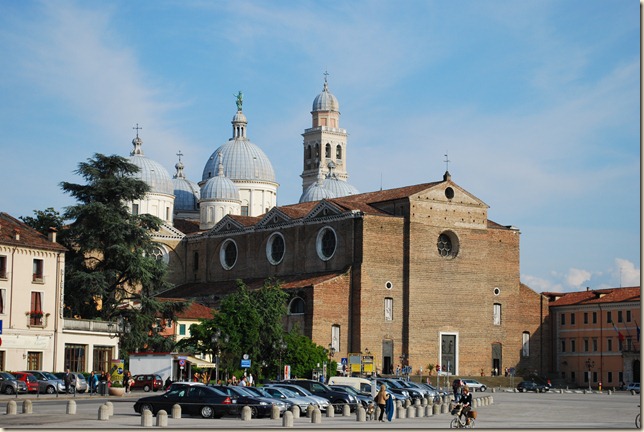 Basilica of St. Anthony of Padua.
Basilica of St. Anthony of Padua.
The boys in a park across from the basilica.
We left Padua at 7pm on Friday evening and arrived back in Trumau at 2:30am. It was an intense, fully packed pilgrimage. It will take a while to meditate on all that we saw. We saw more saints in two days than all of the American saints combined, I think. It has such an impact on your faith and the reality of these great saints. There really were people who lived in specific places, and they really touched specific people.
Thank you! Thank you so much for the great gift of being over here. There would never be enough time in all eternity to express my gratitude for all that you have given us and allowed us to experience. We can only hope to share it with you.
Monday, April 12, 2010
Thomas Sunday

On the evening of that day, the first day of the week, the doors being shut where the disciples were, for fear of the Jews, Jesus came and stood among them and said to them, "Peace be with you." When he had said this, he showed them his hands and his side. Then the disciples were glad when they saw the Lord. Jesus said to them again, "Peace be with you. As the Father has sent me, even so I send you." And when he had said this, he breathed on them, and said to them, "Receive the Holy Spirit. If you forgive the sins of any, they are forgiven; if you retain the sins of any, they are retained." Now Thomas, one of the twelve, called the Twin, was not with them when Jesus came. So the other disciples told him, "We have seen the Lord." But he said to them, "Unless I see in his hands the print of the nails, and place my finger in the mark of the nails, and place my hand in his side, I will not believe." Eight days later, his disciples were again in the house, and Thomas was with them. The doors were shut, but Jesus came and stood among them, and said, "Peace be with you." Then he said to Thomas, "Put your finger here, and see my hands; and put out your hand, and place it in my side; do not be faithless, but believing." Thomas answered him, "My Lord and my God!" Jesus said to him, "Have you believed because you have seen me? Blessed are those who have not seen and yet believe." Now Jesus did many other signs in the presence of the disciples, which are not written in this book; but these are written that you may believe that Jesus is the Christ, the Son of God, and that believing you may have life in his name.
I have posted a couple of times how beautiful and insightful I find the various short hymns, generally called stichera, that are sung at various times during the Liturgy. However, more are sung at the various prayers of the Divine Office. I thought I would once again share some of these for your personal meditation. The following stichera are taken from vespers of last Saturday night for Thomas Sunday.
Even though the doors were closed, You came to your disciples O Christ, and Thomas, called the Twin, was not with them. Therefore, he did not believe what they told him. You did not deem him unworthy for his lack of faith, but in your goodness, You confirmed his faith by showing him your pure side and the wounds in your hands and feet. He touched them, and when he saw You, he confessed You to be neither an abstract God nor merely human; and he cried out: My Lord and my God, glory to you!
On the eighth day the Savior came to the doubting disciples. He granted them peace and said to Thomas: O Apostle, come and touch my hands which are pierced by nails. How wonderful is this doubt of Thomas! It brought the hearts of believers to the knowledge of God. Therefore, he cried out with fear: My Lord and my God, glory to You!
After your Resurrection, O Lord, You appeared in the midst of your disciples and granted them peace as they gathered together behind closed doors. And Thomas was convinced after seeing your hands and side; therefore, he confessed that You are Lord and God, and Savior of those who place their trust in You. O Lover of Mankind, glory to You!
Although the doors were closed, Jesus appeared to his disciples. He took away their fear and granted them peace. Then He called Thomas and said to him: Why did you doubt my Resurrection from the dead? Place your hand in my side; see my hands and feet. Through your lack of faith everyone will come to know of my passion and my Resurrection, and they will cry out with you: My Lord and my God, glory to you!
Manifesting the brightness of your divinity, You appeared even though the doors were closed, O Lord. Standing in the midst of your disciples, You uncovered your side and showed them the wounds of your hands and feet, delivering them from the sadness that had overcome them. You spoke to them clearly and said: As you see, my friends, I have assumed flesh; I am not pure spirit. You spoke to the disciple who had doubted and asked him to touch your wounds, saying: Explore my wounds and doubt no longer. The disciple touched You with his hand and discovered both your divinity and humanity; filled with fear, he cried out in faith: My Lord and my God, glory to You!
O marvelous wonder! The lack of faith gave birth to a certainty of faith; for Thomas said: Unless I see, I will not believe! Therefore, when he touched your side, he acknowledged that You were the Incarnate Son of God, and he knew that You truly suffered in the flesh; and thus he proclaimed your resurrection from the dead, saying: My Lord and my God, glory to You!
O marvelous wonder! For grass has touched the fire and was not burned. Thomas placed his hand into the fiery side of the Savior, and he was not consumed by touching Him. Truly, his soul was changed from doubt to faith, and he exclaimed from the depth of his spirit: You are my Master and my God who arose from the dead. O Lord, glory to You!
O marvelous wonder! John leaned on the bosom of the Word, and Thomas was made worthy to touch his side. The first discovered the depth of theology, and the other was privileged to announce the plan of salvation; for he clearly revealed the mystery of his Resurrection, saying: My Lord and my God, glory to You!
How great us your infinite compassion, O Lover of Mankind, for because of your long-suffering You were struck by your enemies; You were touched by an apostle and deeply pierced by those who denied You. How did You become incarnate? How were You crucified, O Sinless One? Teach us to cry out as Thomas: My L ord and my God, glory to You!
I pray O Lord that my doubt would be turned to faith as was Thomas’. Lord, I believe – help my unbelief. In your goodness, enter into my heart even though the door is closed. There, O Lord, show me your hands and your feet that I might fall to the ground as did Thomas and proclaim you my Lord and my God…
Wednesday, April 07, 2010
Χριστός ἀνέστη!! Ἀληθῶς ἀνέστη!!
Deb, the three youngest kids, and I went to Bratislava, Slovakia on Great and Holy Thursday. We attended, with many from the ITI, the Chrism Divine Liturgy at the Ruthenian Byzantine Cathedral. The cathedral was very small. I am not sure it could hold a hundred people. It seemed to be a converted Latin Rite church.
At the Liturgy itself, the bishop consecrates the Holy Myron (Holy Chrism), consecrates new Antimensia, and washes the feet of priests. 
The Antimension (Church Slavonic: Antimens) is similar to the Western corporal, though it serves a function similar to an altar stone. It is a piece of silk or linen which has an icon of the Deposition from the Cross depicted on it, and relics of a martyr sewn into it. Unlike the Western corporal, the Antimension is not removed from the Holy Table after the Eucharist is over, but is kept in the center of the Holy Table, covered by the Gospel Book. (from Wikipedia)
Here are some pictures of the Liturgy.
Here Bishop Peter Rusnák blesses the congregation with a trikerion in his left hand and a dikerion in the right. He blesses with both hands because he, as a bishop, has the fullness of Holy Orders. The candles represent the Three Persons of the Blessed Trinity and Two Natures of Christ, respectively.
The Bishop is preparing to wash the feet of twelve of his priests. I nearly got the entire iconostasis into the picture. There is one more rank higher than is visible. You can see the large icons of Mary (on the left of the picture) and Jesus (obscured by the cross). You can see three doors. The main door (called the Royal Door; in the center) can only used during particular times in the Liturgy and then only by a bishop, priest, or deacon. The doors (closed) next to the icons of Jesus and Mary are called deacon doors. There are two more icons at that level. The one on the far left (as you look at the picture) is of St. Nicholas. I do not know what the icon is on the far right. The next row up has the Last Supper in the center and the twelve events from Christ’s life on either side. The next row up has Jesus in the center with Mary and John the Baptist (the Forerunner) worshipping Christ. The others are prophets, patriarchs, and apostles.
The bishop washing and kissing the feet of one of his priests.
This is a bishop that was martyred under the communists in the 1970s. I believe his name is Bishop Vasil Hopko.
Here is another martyr-bishop from under the communists. His name is Bishop Paul P, Gojdich, O.S.B.M.
I was not aware that in every communist country, I believe, the Greek Catholic Church was outlawed. Many, many Eastern Catholics were martyred under the brutal conditions of prisons or labor camps.
Holy Martyrs of the Eastern Catholic Church, pray for us!!
Tuesday, March 30, 2010
Byzantine Stichera
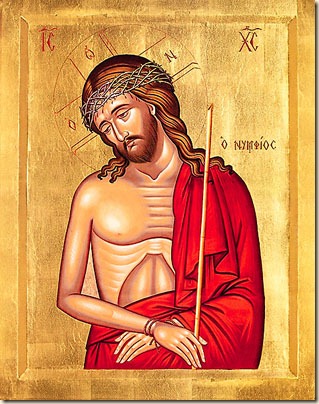 Stichera (singular is sticheron) are short hymns that are sung, typically, between the strophes of Psalms during the Divine Liturgy and the Divine Office. They are a beautiful expression of the faith and contain tremendous insights and food for meditation. Today during Matins (or ὄρθρος, which is equivalent to Morning Prayer in the Latin Rite) there were several beautiful stichera that I wanted to share. I selected several from throughout the service. Please take the time to meditate on these beautiful words.
Stichera (singular is sticheron) are short hymns that are sung, typically, between the strophes of Psalms during the Divine Liturgy and the Divine Office. They are a beautiful expression of the faith and contain tremendous insights and food for meditation. Today during Matins (or ὄρθρος, which is equivalent to Morning Prayer in the Latin Rite) there were several beautiful stichera that I wanted to share. I selected several from throughout the service. Please take the time to meditate on these beautiful words.
Behold, the Bridegroom is coming in the middle of the night. Blessed is the servant He shall find awake. But the one He shall find neglectful will not be worthy of Him. Beware, therefore, O my soul! Do not fall into deep slumber, lest you be delivered to death and the door of the kingdom be closed to you. Watch instead, and cry out: Holy, Holy, Holy are you, O God. Through the intercession of the Mother of God, have mercy on us.
How shall I enter the splendor of your saints, because of my unworthiness? If I dare to enter into your bridal chamber, my garment shall give me away; for I do not have a wedding garment, and the angels shall cast me out. Purify my soul, O Lord, and in your goodness, save me.
I see your bridal chamber completely engulfed with light, O my Savior, and I do not have a wedding garment to enter and enjoy your brightness; fill the garment of my soul with light, and save me, O Lord, save me.
O Bridegroom, whose grace surpasses all human beauty, You invite us to the spiritual feast in your palace. Strip me of the coarse garment of my sin, and make me a partaker of your Passion. Clothe me in the glorious adornment of your beauty. In your mercy, accept me as a luminous guest at the banquet in your kingdom.
Here are a few from Vespers. These struck me very deeply.
All the arrows of the Enemy have pierced my overburdened heart; it now lies in the tomb of laziness, hardened as the rock of the tomb. But You, O Savior, who by the wood of your Cross have given life to the captives in Hades, awaken me and give me life, that in fear I may glorify your divinity.
I have always loved the treasure of my deadly pleasures, and with the aid of the Evil One, without conscience, I have delighted in trivialities. I have disregarded my groaning spirit as another Lazarus, and I hunger for food from on high. Save me, O Word of God, from the threatening fire, that I may glorify your mercy and your love for humankind.
Clothed in the God-woven purple of freedom and in the fine linen of incorruption, you have mocked your own dignity, O my soul. You have sought pleasure and wealth in sin, looking down on your friends as the rich man on Lazarus the poor. That you may not be chastised with him, become poor in spirit and cry to the Lord who became poor for your sake: O Lord, who wore the purple of mockery before your crucifixion and who were stripped and crucified for my sake, grant me the robe of thy kingdom and deliver me from eternal shame.
We hope and pray that you would have a blessed holy week. May the grace poured out during this Great and Holy Week prepare your hearts for the joy of the glorious Resurrection!!
(The Icon is called Christ the Bridegroom.)
Saturday, December 26, 2009
The Synaxis of the Holy Theotokos...
 "He who before the birth of the Morning Star was begotten of the Father, without a mother, became incarnate on earth of you, O mother of God, without a father. Wherefore a star announces to wise men that you have given birth without human seed, and the angels and shepherds glorify you, O Woman full of grace!"
"He who before the birth of the Morning Star was begotten of the Father, without a mother, became incarnate on earth of you, O mother of God, without a father. Wherefore a star announces to wise men that you have given birth without human seed, and the angels and shepherds glorify you, O Woman full of grace!"What an amazing line: ...begotten of the Father, without a mother, became incarnate on earth of you, O mother of God, without a father...
The focus of this time of year is, of course, the birth of Christ. Although that was a miraculous and marvelous event, the most ineffable, extraordinary thing that we celebrate is what happened nine months before, viz., the Incarnation. It was then that the holy (as wholly other), transcendent, mighty God emptied himself to become man so that we might become divine. Let us really reflect on what the Incarnation means to mankind.
